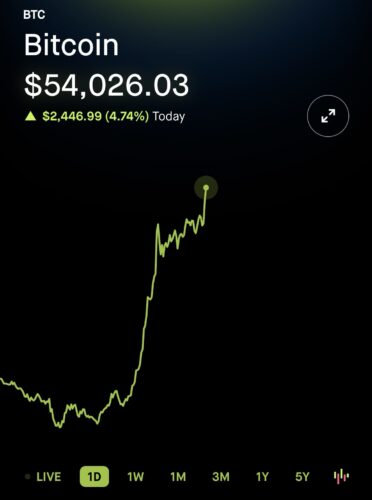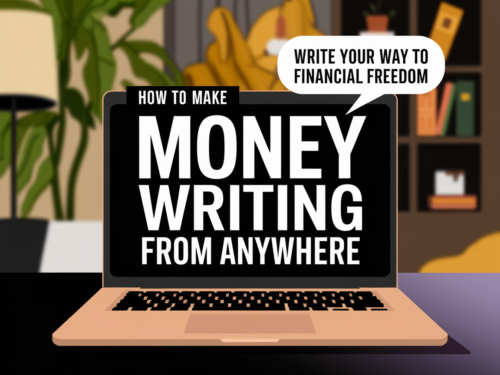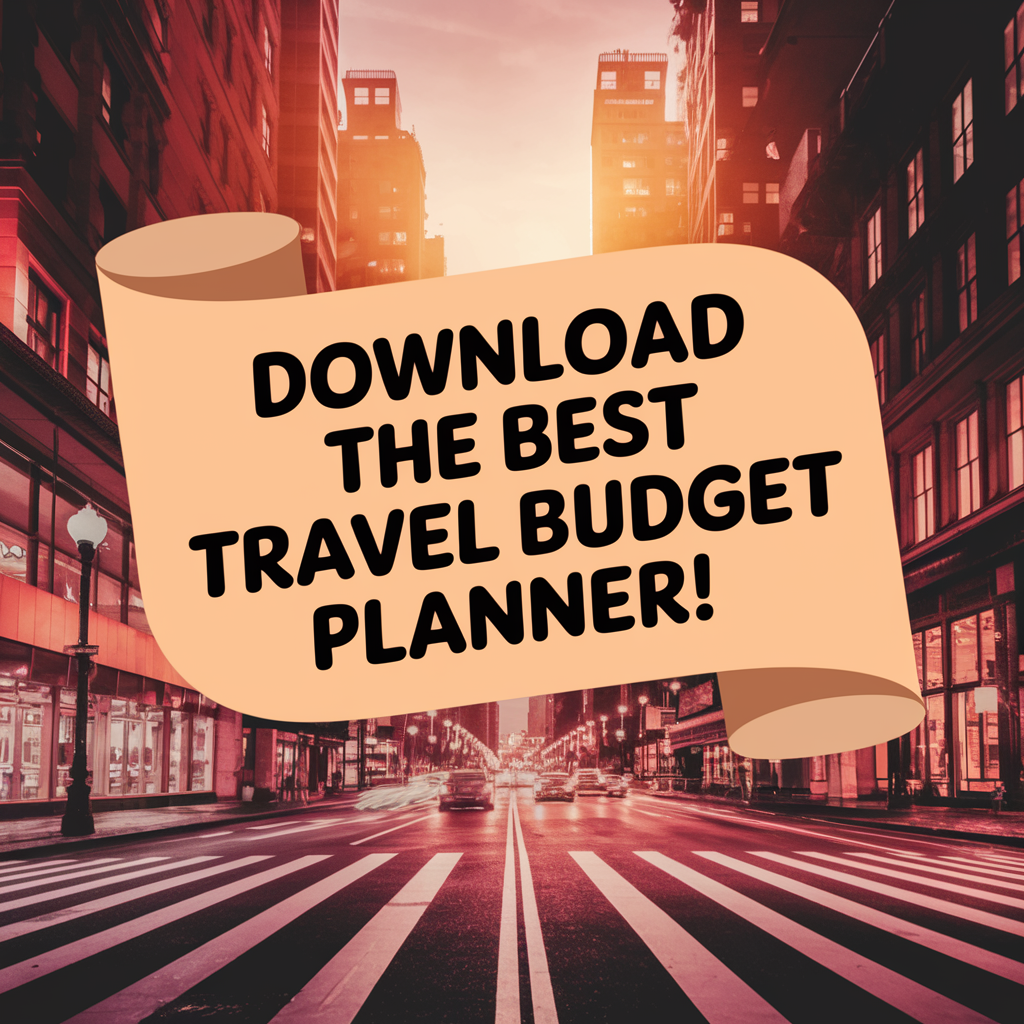
How I Found Out You Can Get Paid to Take Photos
I didn’t go looking to become a photographer—I was just trying to figure out how to make a few extra bucks on the side. One night, I was scrolling through my phone, deleting old pictures to free up space, when I realized something: some of these shots were actually pretty decent.
Sunsets, nature walks, coffee mugs with that “perfect” lighting—stuff I thought was just Instagram filler.
So I googled something like “get paid to take photos” just to see if it was even a thing. Turns out? It absolutely is. And no, you don’t need a $2,000 DSLR or a photography degree to start. Just your phone, a few good photos, and the right platform.
I read a few blog posts, signed up for a couple apps, and before I knew it, I had uploaded my first photo to sell online. I didn’t expect much, but I figured, hey, it’s already on my phone—why not try?
That moment opened a door I didn’t even know existed. And that’s how I ended up starting this photo hustle in the first place.
If you want to see where it led me, I break the whole journey down in this post:
My Journey to $10K a Year Selling Photos Online—definitely worth a look if you’re curious how far this can really go.
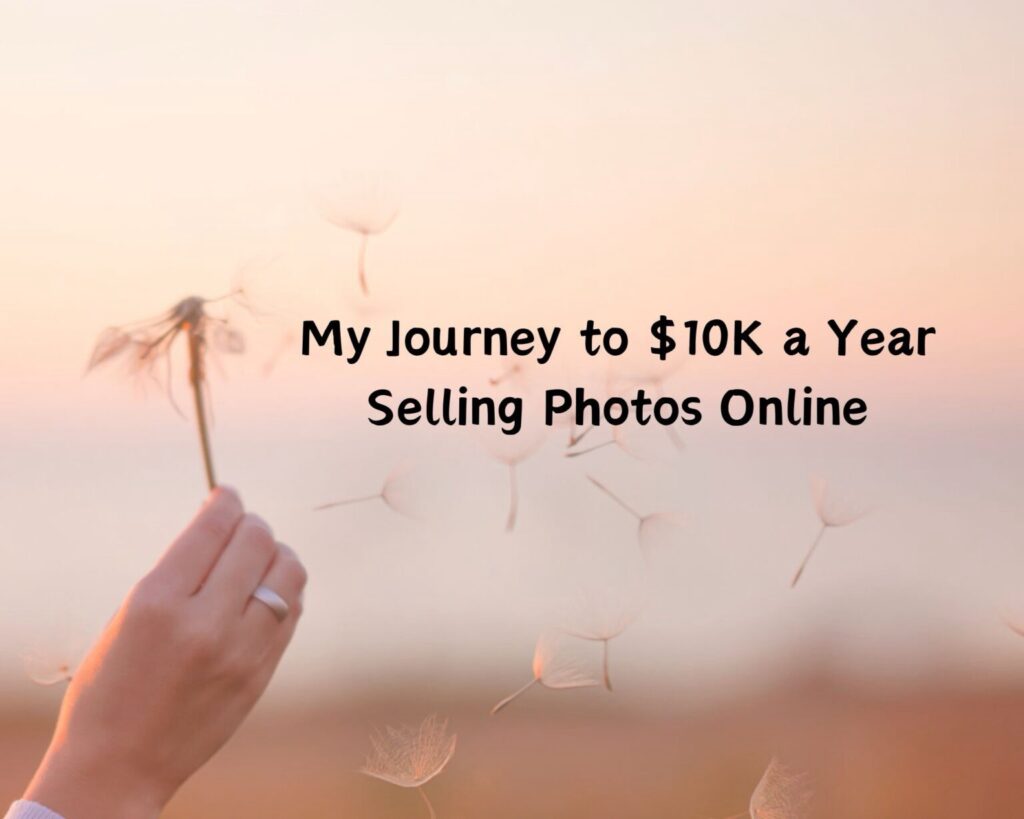
Is It Really Possible to Make Money With Your Phone Camera?
I had doubts too. I mean, who would actually buy my pictures of a random park trail or a well-lit latte?
But here’s what I found: people and companies buy stock photos every day—and they’re not always looking for award-winning shots. They’re looking for real, relatable, and authentic images. Stuff you’re probably already taking without realizing it.
The types of phone photos that can actually sell:
- Nature & landscapes – Trees, skies, parks, hiking trails
- Food & drinks – Coffee mugs, meals, kitchen scenes
- Everyday life – People working, typing, walking, relaxing
- Textures & backgrounds – Walls, wood grain, concrete, cloth
- Travel photos – Hotels, airports, cityscapes, road trips
- Minimalist shots – Clean, simple images with space for text
I didn’t even need editing skills. In fact, over-editing hurts your chances. Stock platforms want clean, natural, high-resolution photos.
Some apps even let you upload directly from your phone, which means you can literally get paid to take photos without ever touching a computer.
Later on, I found out there are platforms where your photos keep earning over time—without lifting another finger. That’s when it started clicking: this wasn’t just a one-off gig… it could actually become passive income.
Check out these other ways to earn in your sleep if you’re into that kind of money momentum.

Where I Sold My First Photo Online (And What I Learned)
The first platform I ever used to get paid to take photos was called Foap. I downloaded the app on a whim, uploaded five of my favorite shots from a nature walk, and forgot about it for a week. I didn’t think anything would come of it.
Then, on a random Tuesday afternoon, I got a PayPal notification. Someone had bought one of my photos for $5. It was a blurry-ish picture of a walking path with sunlight cutting through the trees. Nothing fancy—just real. And that’s when I realized: it’s not about perfection, it’s about relatability.
I’ve tried a few more platforms since then, and here’s what I’ve learned from experience:
My biggest beginner lessons:
- Upload regularly. The more photos you have, the better your chances of a sale.
- Use detailed tags. I almost didn’t sell that nature shot because I tagged it “trail” and “walk” but forgot to add “sunlight,” “path,” and “trees.” Tags matter!
- Don’t expect overnight riches. My first month brought in about $20 total—but it was $20 I didn’t have the month before.
- Stick with 3–5 apps at most. Don’t spread yourself too thin. Pick a few that fit your vibe and focus there.
That first $5 wasn’t about the money—it was proof. Proof that even my regular, no-filter photos had value to someone else.
And once I had that proof, I started taking this way more seriously. Eventually, I learned how to turn this into a reliable income stream—which I go deeper into here:
Making Money Online from Side Hustles to Full-Time Income

Best Places to Sell Your Photos Online (Even as a Beginner)
Once I knew it was legit, I started testing different platforms. Some worked better than others, but the key was picking the ones that fit my style and were beginner-friendly.
Here are the ones I’d recommend to anyone just starting out:
1. Foap
- Easy to use
- Upload directly from your phone
- Each photo can sell multiple times
- Takes 50% commission (but super beginner-friendly)
2. Shutterstock Contributor
- More competitive, but great long-term
- Buyers are often businesses and marketers
- Needs higher quality (good lighting, clear focus)
- Pays per download, even small amounts add up over time
3. Adobe Stock
- Great for people with a creative edge
- Higher earnings per download
- More selective (they review every upload)
4. EyeEm
- Combines stock and creative marketplace
- Automatically lists your work with Getty Images (huge bonus)
- Known for clean, modern photography
5. Snapwire or Dreamstime
- Both good for mobile photography
- Easy to join, but less volume of buyers than Shutterstock/Adobe
You don’t need to use all of these. I started with Foap and later added Shutterstock once I got more confident. Uploading to 2–3 of these consistently was enough to start seeing small, steady payments rolling in.
This step alone helped me turn my phone from a distraction into a source of income. It’s kinda wild when you think about it—your camera roll might be more valuable than you think.

Tips for Taking Photos That Actually Sell
At first, I was just snapping random shots and hoping for the best. Spoiler: that’s not how you make money. Once I started treating this like a legit photography side hustle, I learned what kind of photos actually sell—and it wasn’t always what I expected.
The goal isn’t to be an award-winning photographer. It’s to take photos that someone out there can use—whether that’s a blogger, small business, or marketing team.
Here are the biggest tips that helped my photos go from ignored to downloaded:
1. Shoot in natural light
Skip the flash. Photos taken in soft morning or evening light (the “golden hour”) usually look cleaner and more professional.
2. Don’t over-edit
You don’t need heavy filters. Most buyers want clean, unfiltered images they can tweak themselves. If you edit, keep it minimal.
3. Shoot in horizontal (landscape) mode
Most websites and marketing materials use horizontal images, not vertical. It gives more space for cropping, text, or ad layout.
4. Keep backgrounds clean
Messy background? That photo’s probably getting passed over. Clear, uncluttered backgrounds = more versatile photos.
5. Think like a buyer
Would this photo work in a blog post, social media ad, or website banner? If not, don’t upload it.
6. Use descriptive keywords
This is HUGE. If you upload a photo of a coffee mug, don’t just tag it “coffee.” Use terms like “latte,” “morning routine,” “breakfast,” “cozy vibe,” “tabletop,” and “workspace.”
7. Upload consistently
Uploading 5 photos a week is better than 100 in one day and nothing for a month. The algorithm likes consistency—and so do buyers.
Once I started following these rules, I noticed my photos weren’t just getting more views—they were getting downloads.
And if you’re curious how I went from these beginner tips to making over $100 with a single weekend hustle, check this out:
I Made $100 With This Weekend Side Hustle
That kind of win builds confidence fast.

How Much Can You Actually Make Selling Photos?
Alright, let’s get real. You’re not going to make thousands in your first month—but the money is real, and it adds up faster than you’d think once you start stacking sales.
Most platforms pay per download, and depending on where you upload, you can expect:
- Foap: $5 per download (you get $2.50 after commission)
- Shutterstock: Starts around $0.25–$0.40 per download but increases with volume
- Adobe Stock: $0.33 to $3.30 depending on the license
- EyeEm/Getty: Can hit $10–$50+ for commercial use
The magic here is that one photo can sell over and over again—without you doing any extra work. That’s what makes this a sneaky-good passive income strategy.
If you upload 50 photos and each one sells just once a month at $2 each, that’s $100/month for something you did weeks ago. And if one photo takes off? You’re golden.
Not bad for something that started as “just uploading pictures from my phone.” It’s one of the few side hustles where you can truly earn in your sleep—and this article on earning in your sleep covers more ways to stack that kind of income.
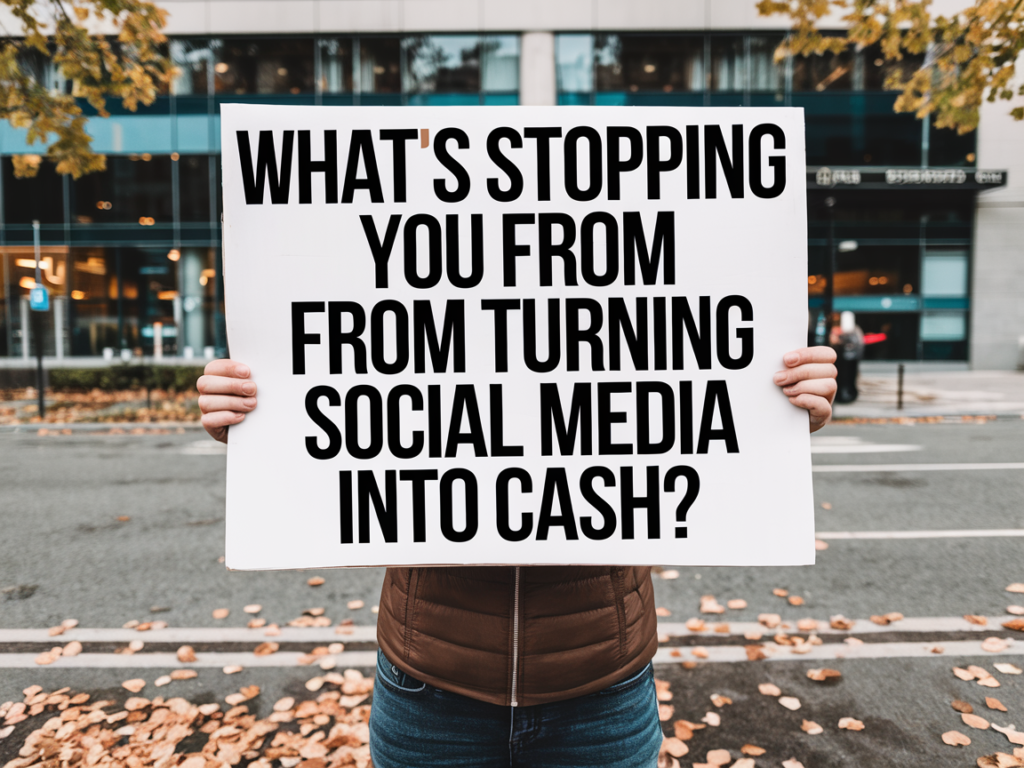
Common Mistakes I Made Starting Out (So You Don’t Have To)
When I first started trying to get paid to take photos, I assumed I could just throw anything up there and cash would follow. Nope. I made plenty of rookie mistakes—some that cost me time, and a few that probably cost me sales.
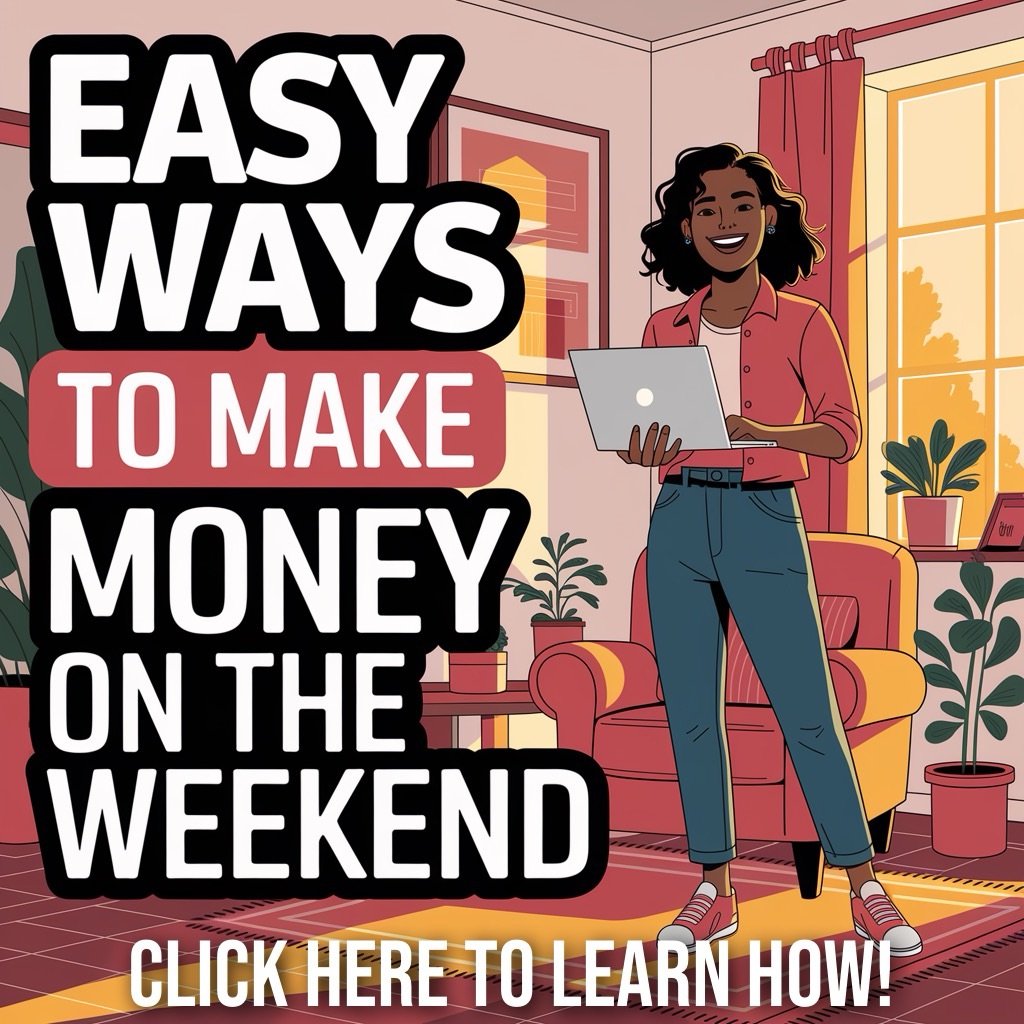
If I could rewind, here’s exactly what I’d avoid from the jump:
1. Uploading blurry or low-resolution photos
Even if the photo looks cool, if it’s not sharp or high-res, it’s not going to get approved—or worse, it’ll get ignored after it’s live.
2. Forgetting to tag photos properly
This one hurt. I uploaded a killer shot of a city skyline but didn’t add any location-based tags. No “New York,” “urban,” or “sunset.” Just “skyline.” It sat there unseen until I fixed the tags weeks later.
3. Using heavy filters
I thought Instagram-style edits would make my shots pop. Turns out, buyers want clean images they can customize. I had to go back and re-upload versions without the moody tints.
4. Only uploading a handful of photos
For a while, I had like 12 total uploads and wondered why I wasn’t getting traction. This game is about volume. One photo might flop—ten might find their audience.
5. Giving up too soon
I almost quit after a month because I hadn’t made more than $20. What I didn’t realize is that it snowballs. One buyer leads to another, and every upload has long-term potential.
Learn from me: keep your photos crisp, your keywords on point, and your uploads consistent.

How to Scale It Into a Real Side Hustle
Once I had a few sales under my belt, I started looking at this less like a one-time experiment and more like a real income stream. That meant tightening my strategy and scaling what worked.
Here’s how I took things up a notch:
1. Batch and schedule uploads
I’d take 50–100 photos in a week and upload them in chunks, not all at once. This kept my profile active and boosted visibility.
2. Niche down
After a while, I noticed that my minimalist work-from-home shots were selling way more than anything else. I leaned in hard on that vibe—and my sales doubled.
3. Reinvest in better lighting or editing apps
You don’t need a fancy camera, but a simple phone tripod or a better editing app (like Snapseed or Lightroom Mobile) made a huge difference.
4. Build a portfolio across multiple platforms
Once I got the hang of one app, I started cross-posting to others like Shutterstock and Adobe Stock. Same photos, more exposure.
5. Create a system
Every Sunday became “upload day.” I’d tag, write descriptions, and upload new content for the week. This routine kept things moving forward.
Eventually, this went from “extra coffee money” to a solid chunk of monthly side income. And if you’re curious how I scaled that even further, here’s the full breakdown of my journey to $10K a year selling photos online—it’s packed with everything I wish I’d known when I started.

